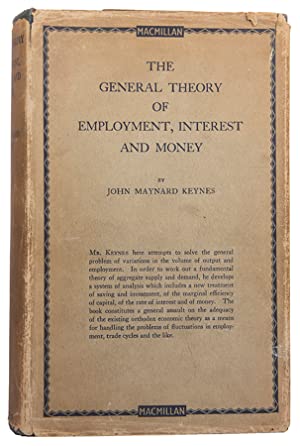Reading Club Update and The Role of Theory and History (also stuff on dollars and BRI)

A few weeks ago, I did a poll on what to do for a premium feature on this website, and the winner has been some kind of Trade Wars are Class Wars book club. I am going to modify that a bit and probably include Joe Studwell's How Asia Works as the accompanying book. In many ways, I think what this will be a fusion with the EMs course idea where we use these as textbooks and engage with them.
Details will obviously follow, but I am increasingly sure this is a good idea because it seems timely. There is a lot of "discourse" on China's Belt and Road debt, de-dollarization, and other very live issues that I think are poorly done. My boss, Nils Gilman, tweeted some stray thoughts on an AP article about debt to China as part of Belt and Road, and it's had shocking impressions.
I believe a major issue with much of the discussion is that it attempts to develop a theory based on specific instances. This is a topic that is close to my heart. As many of you may know, I have a background in history. However, my role as a historian is quite unusual within the academic discipline of history (which is why I chose to leave it behind). Not only do I specialize in economic history, but I also have a strange approach as I base most of my theories on post-Keynesian growth models, rather than econometric testing or the history of capitalism (which I have several concerns with).
When I was an undergraduate, history spoke much more to me than economics because it felt more real than what I was learning in micro. There were big secular changes over time that were happening that were interesting to read about and extrapolate from. Micro was just a theory of behaviors that I could fit into tools called "models." Alas, I had no idea about other traditions since I was in a pretty staid department in my undergrad. In history, and especially in economic history, I could see changes and institutions. I think that experience is why a lot of people who chose (make the mistake of) becoming historians are very allergic to theory. I was certainly one of them.
However, that changed when I read Keynes' General Theory. The part that really appealed to me was how he structured his argument. The GT is set up as an argument against "Say's Law" – that supply creates its own demand through a price adjustment. Alex William's blog is what you want to read if you want a chapter-by-chapter discussion of how the book is written and what Keynes argues. However, for our purposes, I want to emphasize that Keynes sets up his critique of Say's Law not by rejecting it outright but by noting that it is a "special case." In other words. the law can hold under some circumstances, but it is more informative in that it fails than that it holds at all times. The logic is really, really clean. Say's Law is more normative than it is a law, and if it is not a law, then you have to do a lot of work to make it real: work that can be more destructive than helpful. In fact, I think that's a lot of what conservative economic thought comes down to; making Say's Law real.
I think we have the same problem when it comes to theories of growth and development in the context of the dollar debate and other related matters. We have a lot of "special cases" that are being discussed as theories. This is not always the fault of the authors of these books. In fact, I know that they would agree with me. In fact, I think Pettis' Volatility Machine is a work of very high theory that you have to read to understand the rest of his output in its proper context. However, I think that we have lost access to a lot of really complex, good theories, which makes these two books of what I would call "contemporary history" so hard to understand and discuss. I am often at fault for doing this myself.
I think an example would help. For a few years, my friend Karthik Sankaran and I have debated whether a trade deficit is necessary for a reserve currency to be a dominant currency. To be frank, I did not always understand his position until his new interview on Odd Lots. In theory, Karthik is right. We both agree what makes a dominant currency is neither the composition of reserves nor invoicing but the denomination of private debt. In this case, private debt is not defined by any kind of legal basis, but rather by issuing debt in money you cannot print. From this point of view, so-called "Eurobonds" issued by sovereigns are as private as corporate bonds.
Karthik makes the point that you had dominant currencies that were anchored by exporters: the United States after 1945 (I would go back further and say after 1916) and the British in the 19th Century. What allowed both these countries to be dominant currencies while being big exporters was that they managed a system through the capital account rather than the current account. In other words, they exported their savings aggressively to other countries while maintaining a trade surplus. From Karthik's point of view, the fact that the United States is a trade deficit hegemonic currency is not a rule but a special case.
Karthik is right. There is nothing violating any kind of accounting identity in his examples. Abstractly, the system he describes is possible. However, is it stable?
To answer that, we need more theory and more history. I do not think that history shows that these systems are stable relative to the contemporary dollar (non)system. First, the UK system was extremely unstable. It could operate for a very long time because it was a commodity currency (gold), and thus the UK would be forced to export capital. However, the 19th century was a very, very difficult time to be alive, in part because the necessity for keeping this system going was multiple great depressions. Moreover, the 19th century UK was a very strange bird indeed. It ran big deficits vis-a-vis its colony – India – to feed itself (and starve others) because it was a very small, highly productive island. Think of it as Japan more than America. By the end of the pound system, it was losing the ability to be an exporter already but did not have the market depth to be a hegemonic importer.
The American system is also strange. First, we can divide it into three periods. First is the pre-hegemonic period in the 19th Century, where the United States was a capital importer. Even then, the US is a massive domestic market relative to most other economies. Its import of capital results in a lot of financial instability but also very rapid technological installation, which, in turn, deepens the domestic market and leads to institutional innovation in the form of the modern corporation.
In the second period, after WWI, the US was still a hegemonic exporter and captial exporter, and as Adam Tooze argues in The Deluge, this system worked for quite a bit: until it didn't. That is how you got the Great Depression. A big part of that is that the US, as a hegemonic exporter, cannot manage the intricate political economy that is required to assure both general financial stability, growth, and the domestic politics of an export economy.
Finally, we get to the third period, which is after WWII. The US is very much the most hegemonic exporter possible because the rest of the world is devastated by war. However, what we see after WWII is that through a series of intentional policies and improvisations, the United States slowly allowed the rest of the world to build up a deficit against it. Not only that, but as I discussed earlier, in the context of industrial policies and public options, it actively exported its capital to allow others to export goods back into it. It slowly but surely moved to a deficit hegemon position and then, with a lot of pain and struggle, rebuilt the monetary system into one that is relatively stable over the next fifty years.
This set of conditions and case studies reveals something very interesting, in my opinion. In Charles Kindleberger's work, he defines the function of a monetary hegemon as playing a global coordinating role by running a deficit to provide markets for distressed goods and long-term liquidity, as well as creating both long-term credit taking in deposits and short term liquidity by lending into crises. This is a theoretical statement about a systemic stability condition based on a theory of how monetary relations interact with real ones.
You can meet this stability condition as a hegemonic exporter if you are one because of your very high productivity relative to everyone else. But that productivity would have to be something truly revolutionary, like being a continent-sized economy that did not suffer the consequences of two world wars or unleashing the industrial revolution. So from the point of view of special conditions in the world of Kindleberger's theory, we can have two special cases. Just as under Keynesian assumptions, we can have a world where Say's Law holds; we can also have a world with a hegemonic exporter. However, from the point of view of political economy, the hegemonic importer is much more probable.
This gets me into the issue of Chinese Belt and Road loans. I think China could be doing a lot in solidifying itself as a constructive force in the world by lending its massive surpluses to the developing world. However, I think it is doing it wrong either on purpose or because of, as Nils would argue Cold War-like assumptions. Most Chinese lending is still going to infrastructure. This is not a bad thing per se. Infrastructure is critical to development and has multipliers. But it doesn't get you too far unless you can create a profit. Profits come from sales. In a Say's Law version of the world, supply creates its own demand, so you will have profits from the act of industrializing. This is also the world of the Lewis development model, where you will have modernization and, thus, a release of labor into more productive industries.
However, in a Keynesian world, demand is autonomous of supply and is very related to social structure. So you will have some level of demand created by an infrastructure multiplier, but unless it is managed in the right way, it will have diminishing returns. Demand has to come in from other sources. Either domestic consumption if you are a big market or from exports (aka importing other people's demand). China's lending, as far as I can tell, is not creating long-term demand for exports that is consistent with full employment in its borrower's economy. Doing so would gradually turn China into a hegemonic importer, and that would create domestic issues.
Here again, I used a theory (Kalecki and Harrod's demand-side growth models) to inform the special cases possible under the theory. In a few months or weeks, I'll be creating a reading group where we'll read Pettis and Klein, and Studwell through these models.
